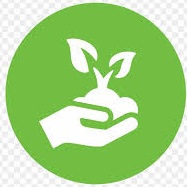“GBCI is extremely pleased to approve the certification of the LEED homes below, built by Fair Haven United Church Homes, verified by Lauryn Zosiak, and supported by LEED for Homes Provider E3 Eco Group. This project received a “LEED Platinum” rating on 5/5/2020. Congratulations!”
The above words, received by Edge Consultants as correspondence from the Green Business Certification Institute, marked the end of a long, and ultimately successful, process to obtain LEED certification for Fair Haven Seniors Home. The approval of the certification was received with pleasure by the entire project team.
What is LEED?
Leadership in Energy and Environmental Design (LEED) is a green building certification program; the most widely used globally. It is developed by the non-profit U.S. Green Building Council (USGBC) and is administered by the Green Building Certification Institute (GBCI). The GBCI perform third-party technical reviews and verification of LEED-registered projects.
LEED includes a set of rating systems for the design, construction, operation, and maintenance of green buildings, homes, and neighborhoods that aims to help building owners and operators be environmentally responsible and use resources efficiently. It has a rating system to account for the majority of building types.
The USGBC periodically releases updated versions of these rating systems and their associated guidance documents. The process of continually updating the standards is to ensure they are aligned with the current best-practices and technologies available in the construction industry.
The LEED standards aim to account for the feasibility of any new practices and technologies being adopted when updating their standards. This feasibility consideration is based on the cost of implementation and the likelihood of projects having access to the required materials, products, or expertise. Therefore, the standards aim to outline realistically achievable requirements for buildings.
Practices and technologies which are state-of-the-art but unproven in the design and construction are largely excluded from LEED standards. This approach allows for the sustainability of buildings to be gradually increased with each update of the standard, without setting unattainable targets.
The Project Team
Fair Haven Senior’s Home, located on Vivian Street in Vancouver, was required to achieve a minimum level of Gold under the LEED for Homes Mid-Rise 2010 rating system. From the outset of the project, the owners were committed to achieving and potentially exceeding this requirement. Exceeding it is exactly what happened.
Platinum LEED certification does not happen by accident. It requires hard work by all involved and needs to be led by a commitment from from the project owner. This commitment must be reflected in a willingness to allocate sufficient time and resources to the LEED process.
This commitment is passed down to the project coordinators. As a result, it is reflected in how the entire project team operates. Before any specific LEED requirements are looked at, the project team must first be made aware of the goal. A willingness to take the steps required to achieve that goal is essential for each individual part of the team.
Constantly being aware of the LEED requirements at each step of the project and making decisions accordingly is a more efficient approach than going too far in any direction and then trying to adapt the project to align with those requirements.
The commitment of each member of the project team is the most important component required to achieve LEED certification. The parent LEED certification organization, USGBC highlights the importance of every team member in this post.
On this project, the role of LEED coordinator carried out by Edge Consultants was made much more manageable due to the commitment of the project team. Credit should be given to all involved in this project, including Laura Hudson who commenced the process and played a major role in obtaining the Platinum Certification:

Benefits Outweigh Frustrations
There is a significant amount of paperwork required for each step in the LEED process. This requirement can often be frustrating for members of the project team. However, it is worth remembering that the basic principle behind each requirement set out by LEED is designed to have a positive impact on the end result.
That end result in Fair Haven’s case is a building containing one hundred and thirty-nine residential units. Therefore, each positive impact LEED has on the building has the knock-on effect of positively impacting the quality of lives for over one hundred and fifty people. The extra hours put in by the project team translates to years of improved living standards for residents. This is even more valuable when one considers the building is a senior’s home.
The documentation and verification associated with LEED is vital to the integrity of the system and ensuring the end result reflects the design. The occasional frustration felt by the project team at having to prepare the documentation necessary pales in comparison to the positive impact it has on the end users of the building and the wider community. Recognizing this can reinforce the overall commitment to successfully getting LEED certified.
Sustainable Features
The positive impact LEED has on the project reaches into various components of the design. In the case of a Platinum certified project, this is particularly true. To achieve such a high level of certification, the Fair Haven Senior’s Home project was required to excel in many areas.
The following examples highlight the wide range of areas that LEED positively impacted during the project. This list is not an all-inclusive.
 Air quality: The building has a dedicated ventilation system to ensure occupants receive adequate fresh outdoor air into each individual living unit. A high level of indoor air quality is maintained as a result. This system also reduces the risk of exposure to indoor pollutants. The ventilation air supplied into the building passes through heat recovery ventilators (HRV). These heat the cold incoming air with the warm air which is being extracted from the building.
Air quality: The building has a dedicated ventilation system to ensure occupants receive adequate fresh outdoor air into each individual living unit. A high level of indoor air quality is maintained as a result. This system also reduces the risk of exposure to indoor pollutants. The ventilation air supplied into the building passes through heat recovery ventilators (HRV). These heat the cold incoming air with the warm air which is being extracted from the building.
 Energy efficiency: The HRV system installed in the building recovers over 80% of heat being extracted from the building. Therefore, it greatly improves indoor air quality and also significantly reduces the energy requirement to heat the building. The quantity of heating energy required is further reduced with the design of a highly efficient envelope, with insulation, and low glazing percentages. Tall windows increase access to daylight thereby also reducing interior lighting demands. Energy efficient appliances are used throughout the building. For example, all refrigerators and dishwasher appliances are Energy Star labelled.
Energy efficiency: The HRV system installed in the building recovers over 80% of heat being extracted from the building. Therefore, it greatly improves indoor air quality and also significantly reduces the energy requirement to heat the building. The quantity of heating energy required is further reduced with the design of a highly efficient envelope, with insulation, and low glazing percentages. Tall windows increase access to daylight thereby also reducing interior lighting demands. Energy efficient appliances are used throughout the building. For example, all refrigerators and dishwasher appliances are Energy Star labelled.
 Water efficiency: The Energy Star label not only promotes energy efficiency but also water use efficiency. Therefore, water efficiency was a selection criteria when choosing electrical appliances. High-efficiency water fixtures (sinks & showers) are installed in the building to reduce the amount of water consumed. Best practices were followed throughout the landscape design process, to ensure the water consumption of the whole site is minimalized.
Water efficiency: The Energy Star label not only promotes energy efficiency but also water use efficiency. Therefore, water efficiency was a selection criteria when choosing electrical appliances. High-efficiency water fixtures (sinks & showers) are installed in the building to reduce the amount of water consumed. Best practices were followed throughout the landscape design process, to ensure the water consumption of the whole site is minimalized.
 Contaminant control: A number of measures are included in the building to optimize indoor environmental quality and reduce contaminant control; the ventilation system mentioned above is one such example. Additionally, smoking is prohibited throughout the building. Permanent walk-off mats are installed at doors for contaminant control. Vestibules in the garage area are designed to minimize pollutants passing from the garage to other areas.
Contaminant control: A number of measures are included in the building to optimize indoor environmental quality and reduce contaminant control; the ventilation system mentioned above is one such example. Additionally, smoking is prohibited throughout the building. Permanent walk-off mats are installed at doors for contaminant control. Vestibules in the garage area are designed to minimize pollutants passing from the garage to other areas.
 Landscape design: The landscaping surrounding the building is designed to be environmentally sustainable. As previously mentioned, water consumption was minimized through selection of drought-tolerant plants. Additionally, it was ensured that no invasive plants are incorporated into the design. Erosion of soil is reduced by the planting of suitable trees and shrubs and a comprehensive stormwater quality control plan was developed to manage surface water on the site. Non-chemical pest control strategies have been incorporated into the design to avoid the future need for pesticides.
Landscape design: The landscaping surrounding the building is designed to be environmentally sustainable. As previously mentioned, water consumption was minimized through selection of drought-tolerant plants. Additionally, it was ensured that no invasive plants are incorporated into the design. Erosion of soil is reduced by the planting of suitable trees and shrubs and a comprehensive stormwater quality control plan was developed to manage surface water on the site. Non-chemical pest control strategies have been incorporated into the design to avoid the future need for pesticides.
 Sustainable materials: Environmentally preferable products were selected as building components where possible. Emphasis was placed on the use of materials with recycled content and reclaimed materials. Locally produced materials were preferred. The use of products with low emissions of volatile organic compounds was also emphasized. Wood products certified by the Forest Stewardship Council were preferred in the project. Additionally, no tropical wood was used in the building. These measures aimed to ensure environmentally sustainable materials were used throughout the project.
Sustainable materials: Environmentally preferable products were selected as building components where possible. Emphasis was placed on the use of materials with recycled content and reclaimed materials. Locally produced materials were preferred. The use of products with low emissions of volatile organic compounds was also emphasized. Wood products certified by the Forest Stewardship Council were preferred in the project. Additionally, no tropical wood was used in the building. These measures aimed to ensure environmentally sustainable materials were used throughout the project.
 Waste reduction: A comprehensive waste management plan was implemented during construction. Local companies were engaged to ensure that 90% of the waste generated during the construction of the building was diverted from landfill. This was achieved through the practices of sorting, recycling, reusing and reclaiming materials whenever possible. Post construction, an extensive recycling and composting protocol has been established to ensure waste from the building is minimized once operational.
Waste reduction: A comprehensive waste management plan was implemented during construction. Local companies were engaged to ensure that 90% of the waste generated during the construction of the building was diverted from landfill. This was achieved through the practices of sorting, recycling, reusing and reclaiming materials whenever possible. Post construction, an extensive recycling and composting protocol has been established to ensure waste from the building is minimized once operational.
 Sustainable transport: The project was located in an area well served by public transit. There are also extensive community resources in the locality, to limit the amount of travel required for building occupants to access such resources. To further encourage the use of sustainable transit options, the building has secure storage facilities for bicycles and provides preferred parking spaces for fuel-efficient vehicles. Some of the areas considered above would likely be addressed on projects which are not engaged in the LEED process. However, they may not be considered to such a degree and the resulting solutions would likely not be as effective as those arrived at through use of the LEED guidelines. The documentation and certification process ensures that the design considerations are executed during the construction and pre-occupancy stages of the project. The assurance that components of design are realized upon building occupancy is a vitally important part of what makes the LEED certification process worthwhile.
Sustainable transport: The project was located in an area well served by public transit. There are also extensive community resources in the locality, to limit the amount of travel required for building occupants to access such resources. To further encourage the use of sustainable transit options, the building has secure storage facilities for bicycles and provides preferred parking spaces for fuel-efficient vehicles. Some of the areas considered above would likely be addressed on projects which are not engaged in the LEED process. However, they may not be considered to such a degree and the resulting solutions would likely not be as effective as those arrived at through use of the LEED guidelines. The documentation and certification process ensures that the design considerations are executed during the construction and pre-occupancy stages of the project. The assurance that components of design are realized upon building occupancy is a vitally important part of what makes the LEED certification process worthwhile.
Resources and Further Reading
CTV News wrote the following article about the opening of Fair Haven Seniors Home:
Buildings account for over one-third of global energy-related CO2 emissions. Ensuring a sustainable built environment is vital to achieving any global CO2 emission reduction goals. The following article, compiled by the U.S Green Building Council, outlines the benefits of green buildings.
The following webpage provides details on the previously mentioned Energy Star program. It is run by the U.S Environmental Protection Agency and the U.S Department of Energy.
The following web page provides details on the previously mentioned Forest Stewardship Council . It is run by the international non-profit organization of the same name.
Estimated reading time is 6-8 minutes.